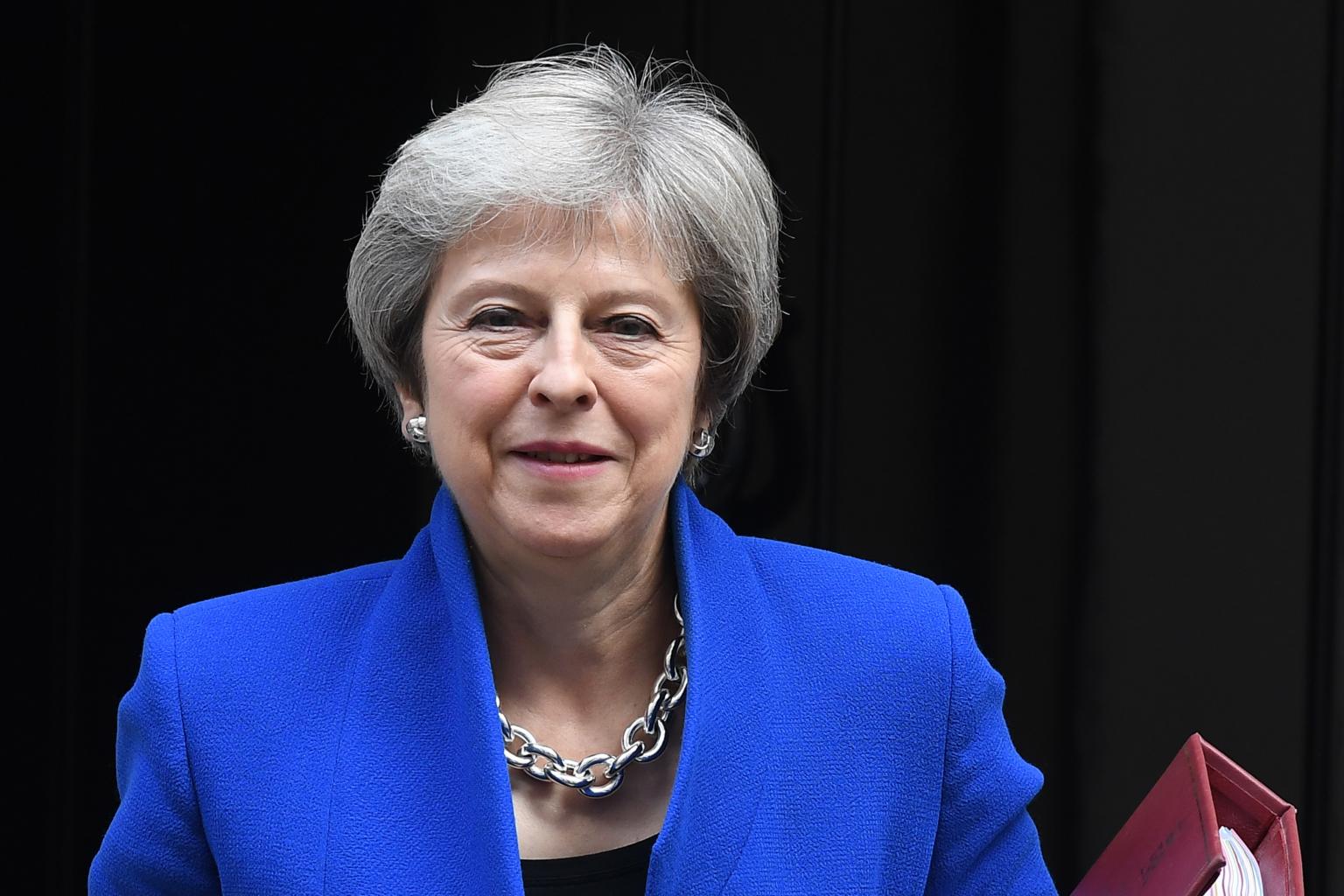Theresa May's Brexit deal: What we know so far
Sign up now: Get ST's newsletters delivered to your inbox

In order to stay in power, British Prime Minister Theresa May relies on the votes of Northern Ireland's Democratic Unionist Party in Parliament.
PHOTO: EPA-EFE
Follow topic:
LONDON (BLOOMBERG) - UK Prime Minister Theresa May will ask her Cabinet to back her draft Brexit deal on Wednesday (Nov 14), despite the fact that she might still fail to get it past her own Conservative Party.
Here's what's said to be in the terms of the UK's divorce deal so far, according to officials briefed on its contents.
1. THE IRISH BORDER
This was the hardest part to negotiate but convincing Mrs May's own side to back it could be even more difficult.
Under the terms of the so-called backstop guarantee - designed to avoid border checks on goods crossing the land frontier with Ireland - the whole UK will be in a customs union with the EU.
There will be no way for the UK to unilaterally leave that backstop arrangement, despite Mrs May's efforts to secure a suitable exit mechanism.
What it means: This is a toxic combination for pro-Brexit Tories in Mrs May's team who want to "take back control" of British laws, tariffs and borders, and strike free trade deals around the world.
2. THE BRITISH BORDER
Mrs May wanted to avoid a new customs border in the Irish Sea, separating mainland Britain from Northern Ireland.
But Northern Ireland will be more deeply embedded in the EU's customs union than the rest of the UK because it will sign up to the EU's full customs code, according to three European officials and one British official.
The treaty will set out differences between the treatment of Northern Ireland and the rest of the UK, according to diplomats.
Northern Ireland will stick to some of the EU's single market rules for goods so that food and agriculture products can cross the Irish border without red tape.
This is a major risk for Mrs May. In order to stay in power, she relies on the votes of Northern Ireland's Democratic Unionist Party in Parliament.
They have vowed to oppose any deal that keeps Northern Ireland in a different customs or regulatory regime from the rest of Britain.
3. LEVEL PLAYING FIELD
It's not just the customs union. The UK will also sign up to EU single market regulations on good standards and "level playing field" trade commitments.
That means the country will stay aligned to European state aid, competition and social and environmental rules.
4. THE TRAP
Mrs May's pro-Brexit ministers initially demanded a fixed end date to the backstop, to ensure the UK wouldn't be kept captive inside the EU customs union forever.
The EU refused, insisting that there could not be a time limit to a guarantee clause that might be needed indefinitely.
Instead, the deal offers a review mechanism, but it does not give the UK the power unilaterally to withdraw from the backstop.
Again, this is unacceptable to hardline Brexit supporters in Mrs May's Tory party.
5. LEGAL ADVICE
Mrs May is facing calls to give the Cabinet the full private legal advice spelling out why exactly her deal is worth supporting - and especially how it can reassure pro-Brexit ministers that the UK can't be kept against its will in the backstop customs arrangements forever.
Instead, she's provided a summary of that legal opinion, produced by Attorney-General Geoffrey Cox, and it gives no comfort to worried ministers.
According to one person familiar with the matter, the summary legal advice won't help Mrs May.
It makes clear that she failed to negotiate any meaningful new mechanism to give the UK more control over how long it will be forced to stay in the backstop regime.
6. THE MONEY
Toward the end of the transitional period in 2020, the UK will be able to choose between extending these existing status quo trade terms - at a price of continuing its annual payments of about 10 billion pounds (S$17.95 billion) to the EU - or dropping out of the single market and customs union and into the Irish border backstop.
That would mean no need for such payments, but it would also mean committing to keeping inside the EU's customs regime indefinitely.
7. FUTURE PARTNERSHIP
The 600-page divorce deal also contains a far shorter blueprint for the future relationship between the UK and the EU.
This draft makes clear that the backstop arrangement for Northern Ireland will set the baseline for friction-free trade across the Irish border for the long term. Any future trade deal must provide as a minimum the same open border on the island of Ireland.
The draft text holds out the prospect - which Brexit backers crave - of a slimmed down, Canada-style free trade agreement.
But it will only be for mainland Britain. If the government chooses such a deal, Northern Ireland will have to remain inside the backstop customs regime of the EU while the rest of the country goes its separate way.
Such an outcome will be unacceptable to Tories who value the union of the United Kingdom, and those DUP politicians who prop up Mrs May's minority government.

